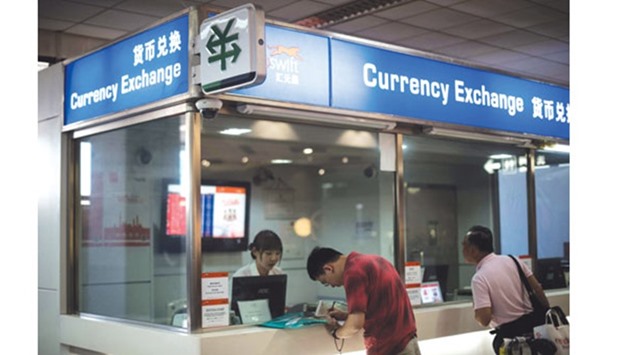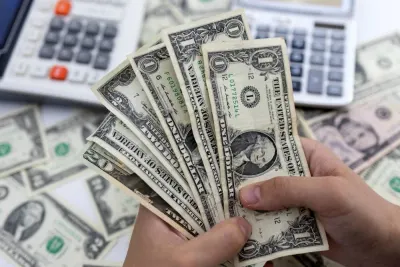In Asia’s post-Brexit currency markets, one of the few things falling faster than the yuan is analysts’ yuan forecasts.
Bank of America Corp, UBS Group, Goldman Sachs Group and Royal Bank of Scotland last week cut their outlooks for China’s currency to 7 per dollar and beyond, joining early bears such as Rabobank Group.
The yuan has slid 1.6% since Britain’s June 23 vote to quit the European Union, a loss rivaled only by the Philippine peso within Asia, as the central bank allowed the currency to weaken against the greenback amid slides in the pound and euro.
Global banks are pricing in the weaker yuan after China’s central bank improved its communication on how it will manage the exchange rate.
They are also factoring in a larger risk of capital flight as policy makers prepare to accelerate defaults and bad-loan write-offs amid the slowest economic growth since the 1990s.
“Things will get difficult if external stress such as US rate hikes affect domestic volatility and raises financial risk,” said Harrison Hu, a Greater China economist at RBS in Singapore. “The pressure for weakness has been building up since Brexit as the yuan’s decline is increasingly self-enforcing.”
Bank of America forecast on July 5 that the yuan would slide more than 4% to 7 by year-end, a level unseen since 2008, while UBS predicted a decline to as low as 7.2 sometime next year.
Goldman, RBS and ABN Amro Bank said the following day they expected the exchange rate to reach 7 in 2017 and the US bank estimated last week that net outflows since October could amount to some $500bn, 50% more than the $330bn implied by official data.
Rabobank’s Michael Everywas among the early movers, having gone against the consensus in September and come out with an end-2016 projection for the yuan of 7.
“When you see debt spiralling and growth slowing in tandem, you know that ultimately the currency is going to give, and substantially,” said Every, head of financial markets research at Rabobank in Hong Kong.
He sees the currency plunging 12% to 7.6 per dollar by mid-2017. Nine of 15 respondents in a Bloomberg survey at the end of last month, including Standard Chartered Plc and Commonwealth Bank of Australia, predicted a government-funded recapitalisation of Chinese lenders will take place within two years.
Analysts who take a more positive view of the yuan say there won’t be any repeat of the panic selling seen during the previous episodes in August and January as traders have become more comfortable with a falling currency after the PBoC better communicated its exchange-rate policy. China’s foreign-currency reserves, which plunged $513bn last year to $3.33tn, unexpectedly rose by $13bn to $3.21tn in June.
“The PBOC’s more predictable fixing policy has reduced worries about capital flight to insignificance,” Tim Condon, head of Asian research at ING Group, wrote in a July 7 note. Outflows “don’t threaten the $3tn line in the sand for foreign reserves,” he said.
A widening yield advantage for Chinese debt over notes in other major economies is also supportive of the currency. The Asian nation’s 10-year debt yields 2.83%, compared with 1.44% for US Treasuries and negative rates in Germany and Japan. The spread over Treasuries reached 148 basis points on July 5, the most since April 2015.
The yuan traded at 6.6834 per dollar yesterday in Shanghai. It’s dropped 2.9% so far this year and a Bloomberg replica of the CFETS RMB Index, which tracks the yuan against the currencies of major trading partners, has lost 6.6%. RBS’s Hu said a further drop of 10% or so against the basket would reprice China’s risks to a large degree.
Chinese residents accumulating foreign assets was the dominant force behind the first quarter’s net capital outflow of $123bn, according to Goldman Sachs. Companies paid down foreign debt by around $60bn to $1.61tn, after a reduction of $156bn in the second half of last year, the bank said.
“Corporates are aggressively paying down their foreign debt because they are thinking the dollar is going up and US rates are going up,” said Claudio Piron, Bank of America’s co-head of Asia currency and rates strategy in Singapore. “Obviously that’s unended. Another thing to watch for is any signs of financial instability in China which will lead to domestic capital flight.”

A man changes foreign currency into Chinese yuan at a currency exchange office in Hongqiao airport in Shanghai. The yuan has slid 1.6% since Britain’s June 23 vote to quit the European Union.


